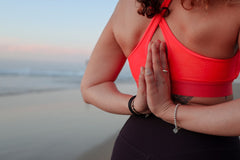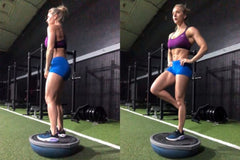Take your lunge on the road and reap the core-crunching benefits.
The lunge is a great exercise, but where would humankind have got to if after every big step forwards we took an equally large one back to end up where we started? Nowhere, that’s where, and certainly not to the Moon. Sometimes you’ve got to keep moving forwards, both in life and in lunges, and that’s where the walking lunge comes in.
You reap all the benefits of the standard lunge, with each and every one of the major muscles in the lower body brought into play – that’s your quads, hamstrings, glutes and calves – and by continually stepping forwards the challenge to your core is increased considerably. That’s because it will be working overtime to keep your torso upright and balanced as you move.
How To Do A Walking Lunge
Stand tall in front of a long and clear walkway. Your feet should be hip-width apart, your chest up, and your core and glutes engaged. Take a big step forwards with your left foot, lowering until both your knees are bent at 90° and your front thigh is parallel to the floor.
So far, so standard lunge, but here comes the tricky bit. Push off of your back (right) foot, bring it forwards and step straight into another forward lunge. You can come back to a standing position in between, and that’s a good place to start with the walking lunge, but it’s all the harder on your core if you try and stay as low as possible while moving forwards. Make sure you keep your torso upright and core braced as you move. Either count each step as a rep or work by distance or time.
Walking Lunge Variations
Reverse walking lunge
Reversing the movement pattern so that you step backwards rather than forwards might seem like an insignificant difference, but it forces you to think more about how you move and it will also work your muscles in a slightly different way to help you build a stronger core and legs.
Weighted walking lunge

Performing walking lunges while holding a dumbbell (or any available weight) in each hand increases the weight your muscles have to move, so it makes each step more difficult and ramps up the benefits for your legs. It will also work your core harder because it needs to be fully engaged to keep your torso stable. Hold the dumbbells with your arms straight and shoulders back, keeping your torso upright.
Written by Nick Harris-Fry for Coach and legally licensed through the Matcha publisher network. Please direct all licensing questions to legal@getmatcha.com.






Be the first to comment